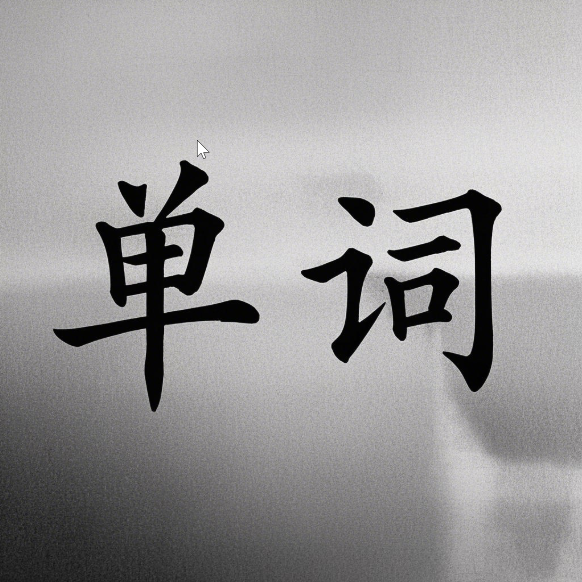texturing
简明释义
n. 纹理;织纹状饰面;合成纤维变形工艺;材质贴图
v. 使具有某种结构(texture 的 ing 形式)
英英释义
单词用法
肌理,皮肤结构 | |
纹理分析;[计]结构分析 |
同义词
| 纹理化 | 艺术家专注于对画布进行纹理化,以创造深度。 | ||
| 图案化 | 对面料进行图案化可以增强其视觉吸引力。 | ||
| 表面处理 | 表面处理对于提高耐用性至关重要。 | ||
| 修饰 | Finishing touches were added to the sculpture for a polished look. | 雕塑上添加了修饰性的细节,以呈现光滑的外观。 |
反义词
| 平滑 | The artist focused on smoothing the surface of the sculpture. | 艺术家专注于平滑雕塑的表面。 | |
| 平整 | 平整布料使缝纫变得更容易。 |
例句
1.But since it is posed and well modeled, it is more easy to give a character more a more natural look with Lighting and Texturing.
但如果模型被很好的摆姿和建模,接下来的灯光和贴图给角色一种更自然的感觉会容易的多。
2.Razvan did the model and I did the texturing from photographic references.
Razvan做了模型,我从相应的图片中引入材质。
3.I apply dodge on the picture of which the texturing stage is over with after merging the layers.
申请回避的图片,其中纹理阶段是合并后的同层。
4.In addition to type and location of surface texturing, femoral components vary in shape and by material and mechanical properties.
除了假体表面结构类型的位置的变化以外,股骨假体随着其形状和材料力学特性不断改变。
5.Focusing on Texturing, Shading, Lighting, Rendering, and grading, this is a valuable resource for any lightwave character modeler.
在纹理,阴影,照明,渲染,和等级为重点,这是任何光波字符建模宝贵的资源。
6.The tutorial will cover the entire process from start to finish, including modeling, layout, animation, texturing, and compositing.
本教程将涵盖从开始的全过程,包括造型,布局,动画来完成,纹理和合成。
7.The artist spent hours on texturing the landscape to make it look more realistic.
艺术家花了几个小时在纹理处理上,使风景看起来更真实。
8.For the sculpture, the artist used different techniques for texturing the surface.
对于这座雕塑,艺术家使用了不同的技术来进行纹理处理。
9.In 3D modeling, texturing is crucial for adding detail to the surfaces of objects.
在3D建模中,纹理处理对于给物体表面添加细节至关重要。
10.The chef focused on texturing the dish, ensuring that each component had a unique feel.
厨师专注于质感处理,确保每个成分都有独特的口感。
11.The video game developers are working on texturing the characters to enhance their appearance.
视频游戏开发者正在进行角色的纹理处理以增强他们的外观。
作文
In the world of art and design, the concept of texturing (纹理化) plays a crucial role in how we perceive and interact with various materials and surfaces. Whether it is in painting, sculpture, or digital media, texturing (纹理化) adds depth and detail that can transform a simple piece into something extraordinary. The importance of texturing (纹理化) cannot be overstated, as it influences not only the aesthetic appeal but also the emotional connection that viewers have with the artwork.For instance, consider a painting that uses smooth brush strokes versus one that incorporates rough, textured techniques. The former may evoke feelings of calmness and serenity, while the latter can create a sense of chaos and energy. This demonstrates how texturing (纹理化) can manipulate emotions through visual cues. Artists often experiment with different materials to achieve the desired texturing (纹理化) effects, utilizing everything from sand and plaster to digital tools that simulate texture in virtual environments.In the realm of graphic design, texturing (纹理化) is equally significant. Designers use textures to enhance their work, making it more engaging and relatable. For example, a website might incorporate a background with a subtle fabric texture, giving it a warm and inviting feel. This kind of thoughtful texturing (纹理化) can greatly influence user experience, making the interface not only visually appealing but also more functional.Moreover, in the field of 3D modeling and animation, texturing (纹理化) is essential for creating realistic visuals. Artists apply various textures to 3D models to mimic real-life materials like wood, metal, or skin. The process of texturing (纹理化) involves mapping images onto the surfaces of these models, which adds intricate details that make them lifelike. This technique is vital in industries such as video game development and film production, where realism is paramount.Beyond the visual aspects, texturing (纹理化) can also influence how a viewer interacts with a piece of art. For example, sculptures that incorporate varied texturing (纹理化) invite touch and exploration, allowing the audience to engage with the work on a sensory level. This tactile interaction can deepen the appreciation for the artist's skill and intention, fostering a more profound connection between the viewer and the artwork.In conclusion, texturing (纹理化) is an indispensable element in various forms of artistic expression. It enriches our visual experiences and enhances emotional responses, making it a powerful tool for artists and designers alike. By understanding and mastering the art of texturing (纹理化), creators can elevate their work, offering audiences a more immersive and engaging experience. As we continue to explore new mediums and technologies, the significance of texturing (纹理化) will undoubtedly evolve, further shaping the future of art and design.
在艺术和设计的世界中,纹理化的概念在我们感知和与各种材料和表面互动的方式中发挥着至关重要的作用。无论是在绘画、雕塑还是数字媒体中,纹理化都增加了深度和细节,可以将一件简单的作品转变为非凡的作品。纹理化的重要性不容小觑,因为它不仅影响美学吸引力,还影响观众与艺术作品之间的情感联系。例如,考虑一幅使用光滑笔触的画作与一幅采用粗糙纹理技术的画作。前者可能唤起宁静与安详的感觉,而后者则可以创造出混乱与能量的感觉。这表明,纹理化可以通过视觉线索操控情感。艺术家们常常尝试不同的材料来实现所需的纹理化效果,利用从沙子和石膏到模拟纹理的数字工具等各种材料。在平面设计领域,纹理化同样重要。设计师使用纹理来增强他们的作品,使其更具吸引力和亲和力。例如,一个网站可能会采用带有微妙织物纹理的背景,赋予其温暖和宜人的感觉。这种深思熟虑的纹理化可以极大地影响用户体验,使界面不仅在视觉上吸引人,而且更具功能性。此外,在3D建模和动画领域,纹理化对创建逼真的视觉效果至关重要。艺术家将各种纹理应用于3D模型,以模拟现实生活中的材料,如木材、金属或皮肤。纹理化的过程涉及将图像映射到这些模型的表面上,从而增加使其栩栩如生的复杂细节。这种技术在视频游戏开发和电影制作等行业中至关重要,在这些行业中,现实主义至关重要。除了视觉方面,纹理化还可以影响观众与艺术作品的互动方式。例如,包含多种纹理化的雕塑邀请触摸和探索,使观众能够在感官层面与作品互动。这种触觉互动可以加深对艺术家技巧和意图的欣赏,促进观众与艺术作品之间更深刻的联系。总之,纹理化是各种艺术表现形式中不可或缺的元素。它丰富了我们的视觉体验,增强了情感反应,使其成为艺术家和设计师的强大工具。通过理解和掌握纹理化的艺术,创作者可以提升他们的作品,为观众提供更沉浸和引人入胜的体验。随着我们继续探索新的媒介和技术,纹理化的重要性无疑会不断发展,进一步塑造艺术和设计的未来。
